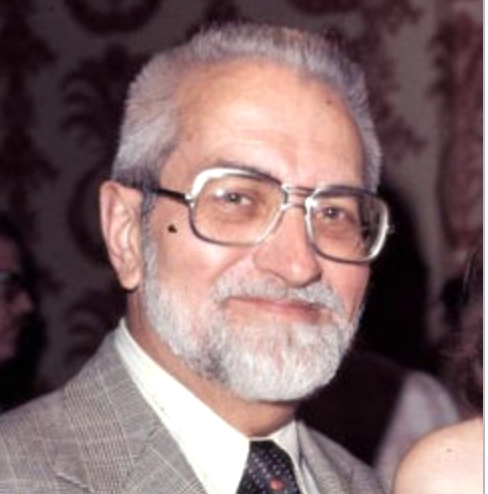On this date in 1918, computer science pioneer Herbert Reuben John Grosch was born in Saskatoon, Saskatchewan, to English emigrants Bessie (Adams) and Reuben Grosch. His father was a skilled cabinet maker who later supervised others in the craft. Grosch was their only child.
His parents attended Anglican services, at least until Grosch at age 9 refused to attend anymore and they stopped going. “Mother later in life developed a reasonable amount of religiosity again and started going a few times a year,” Grosch later said. “I think Dad used to drive her there and leave her and pick her up again at the end of the service.” (Oral interview, Aug. 26, 1970, National Museum of American History)
After his father started working in the U.S., Grosch went to school in Toledo, Ohio, and graduated from high school in the Detroit suburb of Royal Oak, Mich. Enrolling at the University of Michigan in Ann Arbor, he studied astronomy, astrophysics and celestial mechanics, eventually earning a Ph.D. in astronomy there in 1942.
He took a position at the U.S. Naval Observatory in Washington, D.C., in 1941, the year he married Dorothy Carlson in a Lutheran service. She was an astronomical assistant at the Mount Wilson Observatory in Pasadena, Calif. Six years his senior and suffering from depression, she died in 1956 from an overdose of sleeping pills when he was 38.
Not long after her death, Grosch married a teacher, Elizabeth Yeager, whom he’d known while they were in junior high in Toledo. After divorcing, he married Joyce Winn, a divorcée with two young sons, in 1965. They divorced in 1972. Three years later, he married Nancy Hall, who died of cancer in 1996. “I only go to churches to get married,” Grosch later said. “But I always seem to marry people that want to go to church. Although they also turn out only to go to church to get married.” (Ibid.)
Grosch has done pioneering computer work with IBM, General Electric, the federal government and other organizations in the U.S. and overseas. He worked on atomic bomb calculations as part of the 1940s Manhattan Project and was friends with Werner von Braun.
In 1953 in the Journal of the Optical Society of America, he wrote: “I believe that there is a fundamental rule, which I modestly call Grosch’s law, giving added economy only as the square root of the increase in speed — that is, to do a calculation ten times as cheaply you must do it a hundred times as fast.” It became the basis for the aphorism, “Economy is the square root of speed.”
He held a Columbia University professorship from 1946-51 and various others of shorter duration at Arizona State, Boston University, New Mexico State, the University of Nevada-Las Vegas and the University of Toronto. He was editor of the journal Computerworld (1973-76) and president of the American Rocket Society (later the Institute of Aeronautics and Astronautics).
Brian Hayes, American Scientist columnist and editor-in-chief, wrote in 2010 that Grosch cultivated the role of an outsider who saw himself as a lone wolf. “Even when he was an insider he was an outsider. Grosch was elected president of the Association for Computing Machinery — but as a dissident candidate, opposing the slate anointed by the nominating committee.” He died at age 91. (D. 2010)


